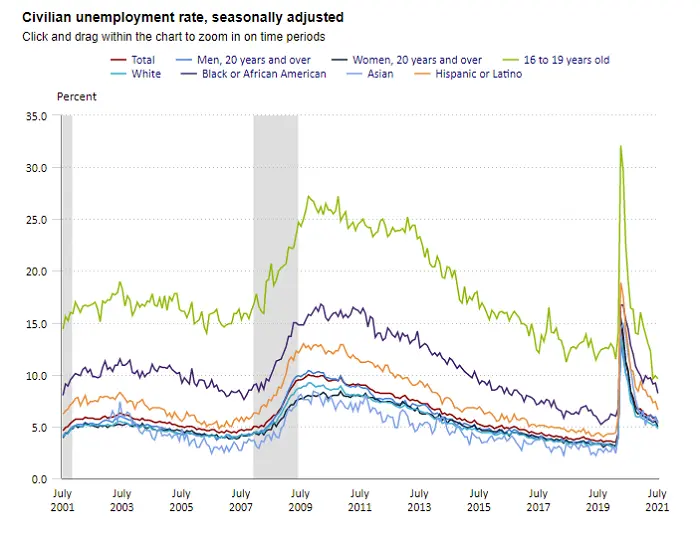Nonfarm payroll (NFP) data is a key indicator of the economic health of the United States. Released monthly by the Bureau of Labor Statistics (BLS), it provides insights into employment trends across various sectors, excluding the agricultural sector, government, and a few other job categories. Understanding what NFP means, how it impacts the economy, and its implications for various stakeholders is crucial for anyone interested in economic analysis or financial markets.
1. What is Nonfarm Payroll?
Definition
Nonfarm payroll refers to the total number of paid workers in the U.S. excluding farm workers, employees of nonprofit organizations, and private household employees. This metric is significant because it reflects the economic activity level, helping to gauge employment trends and overall economic growth.
Components of NFP
The NFP report includes several components, such as:
Total Nonfarm Employment: The overall number of jobs.
Average Hourly Earnings: Indicates wage growth and inflationary pressures.
Average Weekly Hours Worked: A sign of worker productivity and demand for labor.
2. Importance of Nonfarm Payroll Data
Economic Indicator
NFP is a crucial economic indicator that provides insights into:
Labor Market Health: A rising NFP indicates job creation and economic expansion.
Consumer Confidence: More jobs can lead to increased consumer spending.
Inflation and Interest Rates: Strong employment data may influence the Federal Reserve’s monetary policy decisions.
Market Impact
Financial markets closely monitor NFP data:
Stock Markets: Positive NFP reports can lead to stock market rallies.
Bond Markets: NFP figures affect bond yields, influencing investment decisions.
Currency Markets: Traders often react to NFP data, impacting the U.S. dollar’s strength.
3. How Nonfarm Payroll Data is Collected
Data Sources
The BLS gathers NFP data through two primary surveys:
Establishment Survey: Surveys businesses to determine the number of jobs, hours worked, and earnings.
Household Survey: Collects data from households to assess employment status.
Survey Methodology
Sampling: A sample of about 144,000 businesses and government agencies is surveyed.
Estimation: Data is seasonally adjusted to account for employment fluctuations.
4. Interpreting Nonfarm Payroll Reports
Analyzing the Data
When examining NFP reports, consider:
Headline Numbers: The total number of jobs added or lost.
Revisions: Previous months’ figures may be revised for accuracy.
Sector Performance: Job growth or decline in specific sectors provides deeper insights.
Contextualizing the Numbers
It’s essential to compare NFP data with historical trends and economic conditions. For instance, a growth of 200,000 jobs may be positive in a recovering economy but insufficient during a robust expansion period.
5. Recent Trends in Nonfarm Payroll Data
Historical Overview
NFP data has shown various trends over the decades:
Post-2008 Financial Crisis: Slow recovery with gradual job growth.
COVID-19 Pandemic: Significant job losses followed by a rapid rebound in some sectors.
Current Economic Landscape
Recent NFP reports indicate:
Job growth in technology, healthcare, and hospitality.
Challenges in sectors like retail and manufacturing due to economic shifts.
6. Implications of Nonfarm Payroll for Various Stakeholders
For Policymakers
NFP data assists policymakers in shaping economic strategies, including:
Fiscal Policies: Adjusting government spending based on employment trends.
Monetary Policies: Influencing interest rates to manage inflation.
For Businesses
Businesses utilize NFP data for:
Workforce Planning: Adjusting hiring strategies based on economic forecasts.
Salary Negotiations: Understanding wage trends to remain competitive.
For Investors
Investors analyze NFP trends to inform:
Investment Decisions: Adjusting portfolios based on economic conditions.
Market Predictions: Anticipating market reactions to employment data.
7. Conclusion
Nonfarm payroll data serves as a critical barometer for the U.S. economy, influencing everything from monetary policy to investment strategies. By understanding NFP, stakeholders can make informed decisions that align with economic trends. As the economy continues to evolve, keeping an eye on NFP data will remain essential for assessing overall economic health.
This article provides a comprehensive overview of nonfarm payroll, its significance, and its implications for various sectors, ensuring a thorough understanding of this crucial economic indicator.
You Might Be Interested In
- Labor Market Concerns Shift Fed Focus
- Gold’s Reaction to the NFP Report
- Weak US Job Growth Fuels Gold Price Surge


